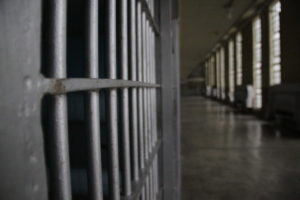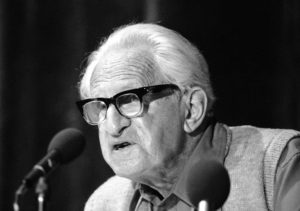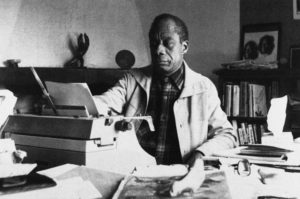Nah, We Straight
Baratunde Thurston's "How To Be Black," part memoir, part investigative journalism and part cheeky instruction manual, explores such topics as "How to Be the Angry Negro" and "How to Be the (Next) Black President."
“How To Be Black”
A book by Baratunde Thurston
The perfect review of Baratunde Thurston’s “How To Be Black” would be a tweet. Either I’d retweet the review by Patton Oswalt, author of “Zombie Spaceship Wasteland” (“After reading ‘How To Be Black’ I realized I’m a white man”) or I’d tweet this: “Daps to @Baratunde for #HowToBeBlack! I bought two (one white cover, one black cover) as he instructed because I’m biracial.” Thankfully I have more space here than a tweet so I can explain why Thurston’s book is a groundbreaking must-read whether you’re black, biracial or anything else.
Few writers explore the complex intersections of race, culture and communication with as much humor, sophistication and downright directness as Thurston. I think the best way to channel his spirit is by listing the top things you get from the book. So here they are, in no particular order:
1. You get sharp social criticism. Part memoir, part investigative journalism, part Instagram photo shoot and part cheeky instruction manual, “How To Be Black” explores such varied topics as “How to Be the Black Friend,” “How to Be the (Next) Black President,” “How to Celebrate Black History Month” and “How to Be The Angry Negro.” Thurston augments his instructions with commentary from a panel of “blackness experts” whose perceptions and experiences are worth reading more about — Cheryl Contee, damali ayo, Elon James White, Jacquetta Szathmari, W. Kamau Bell and Derrick Ashong. Thurston also shows off his sharp sociological and comedic skills by including a white expert on the blackness panel — Christian Lander (author of “Stuff White People Like”) — as part of the “control group.” Thurston subtly reminds us that blackness and whiteness are codependent.
2. You get an experience. The “How To Be Black” experience begins with a story about individual identity as Thurston explains how he, an African-American kid from a broken home in D.C., wound up with a Nigerian name although he’s not Nigerian, and attended some of our nation’s most elite educational institutions. It continues with stories about community identity as Thurston tackles the many faces of blackness, including media, school and the workplace today. It concludes with a portrait of an ever-evolving national identity as our nation grapples with changing demographics, economic recession, educational reform and regressive neoconservatism.
3. You get to laugh. Thurston comes up with some amazing jokes. He responds to the “birther” criticism that plagued Obama’s presidency with his new identification protocol: “Keep a copy of your birth certificate on your body at all times, even in the shower. Use Ziploc bags & Velcro.” Thurston’s brand of comedy encourages audiences to figure out who we are and how we can engage with the social and socially mediated worlds around us for the purpose of positive change. His jokes are persuasive political arguments, informed and authoritative statements, and yes they’re seriously funny.
|
To see long excerpts from “How To Be Black” at Google Books, click here. |
4. You get great writing. On class: “My hood had everything ‘The Wire’ had except for universal critical acclaim and the undying love of white people who saw it.” On race: “Like vampires and extremely rich people, black folk can sense one another.” On family: “I was crying over the idea that I was supposed to have a ‘father’ and now my ‘father’ was gone. The idea of losing him is what felt bad.”
5. You get to change. The great thing Thurston reveals is that blackness is one of many identities up for grabs today. It’s 2012 and stereotypes are being defied on a daily basis. We have a black president; we have billionaire duo Beyonce and Jay-Z; we have Thurston who was raised in a Washington, D.C., ghetto by a pro-black, pan-Afrikan single mother and educated at Harvard University. Thurston redefines blackness as a set of “ideas” that “are changing, and … differ from the popular ideas promoted in mainstream media and often in the black community itself.” And he explains why, at this particular moment in American cultural and political history, black people are perfectly poised to redefine what it means to be black and what it means to be anti-racism. Translation: You get to be a full human being. You get to be. Period. For Thurston it doesn’t matter if you’ve ever been called “too black” or not “black enough.” It doesn’t matter if you’re not black at all. What matters about you is that you get to be yourself. You get to be a walking argument. You get to let the world know who you are and the causes to which you’ll commit.6. You get to watch Thurston lead by example. After telling us about the time he and everyone on the blackness panel realized they were black, he asks us, the readers, to recall the first time we realized we were a race and how, if at all, that realization affected us. He follows that up by asking whether we’ve ever wanted to not be whatever race we are. And he asks us to imagine “the future of blackness.” To that end, the “How To Be Black” experience not only includes updated commentary from the author via Twitter and the enhanced e-book, but an interactive website and a content curation site where readers and trolls alike can weigh in with their thoughts on “how to be black.” The point? There’s no sense in being black all alone. Being black is about being part of something bigger than you.
Thurston leaves readers with a powerful example of anti-racist activism. Through a profound personal narrative and a particular political viewpoint he explains why it’s important to be who we are. And he explains why the most important part of being who we are is talking about who we are. But this isn’t narcissistic chatter. Thurston is interested in communication that leads to community. This means knowing as much about our origins as we do about our aspirations. It means curating a more thorough, honest and educated version of African-American (i.e., American) history so we see that ending oppression is not just a job for black people. It means understanding that the longing for a world without racism is a move toward a world without race. And communication, on the spiritual and emotional levels, becomes community when we understand that being “black” really means being a holistic human being.
In the end, “How To Be Black” is a prologue to racial dialogue rather than a post-racial epilogue or monologue. It is clear from Thurston’s emotionally, geographically and socially moving narrative that being “black” is really an invitation to everyone. That’s where the book moves from ingenuity to profundity. Thurston reminds us that we all have to learn “how to be” whoever we are for the simple reason that all other identities are taken.
And if that’s not enough to persuade you to read this book then Thurston has one more reason for you: “If you don’t buy this book you’re a racist. You don’t want to be a racist, do you?” The answer, since “How To Be Black” is a New York Times best-seller, appears to be no. And the collective desire that that “no” represents is not just hopeful. It’s revolutionary.
Your support matters…Independent journalism is under threat and overshadowed by heavily funded mainstream media.
You can help level the playing field. Become a member.
Your tax-deductible contribution keeps us digging beneath the headlines to give you thought-provoking, investigative reporting and analysis that unearths what's really happening- without compromise.
Give today to support our courageous, independent journalists.







You need to be a supporter to comment.
There are currently no responses to this article.
Be the first to respond.